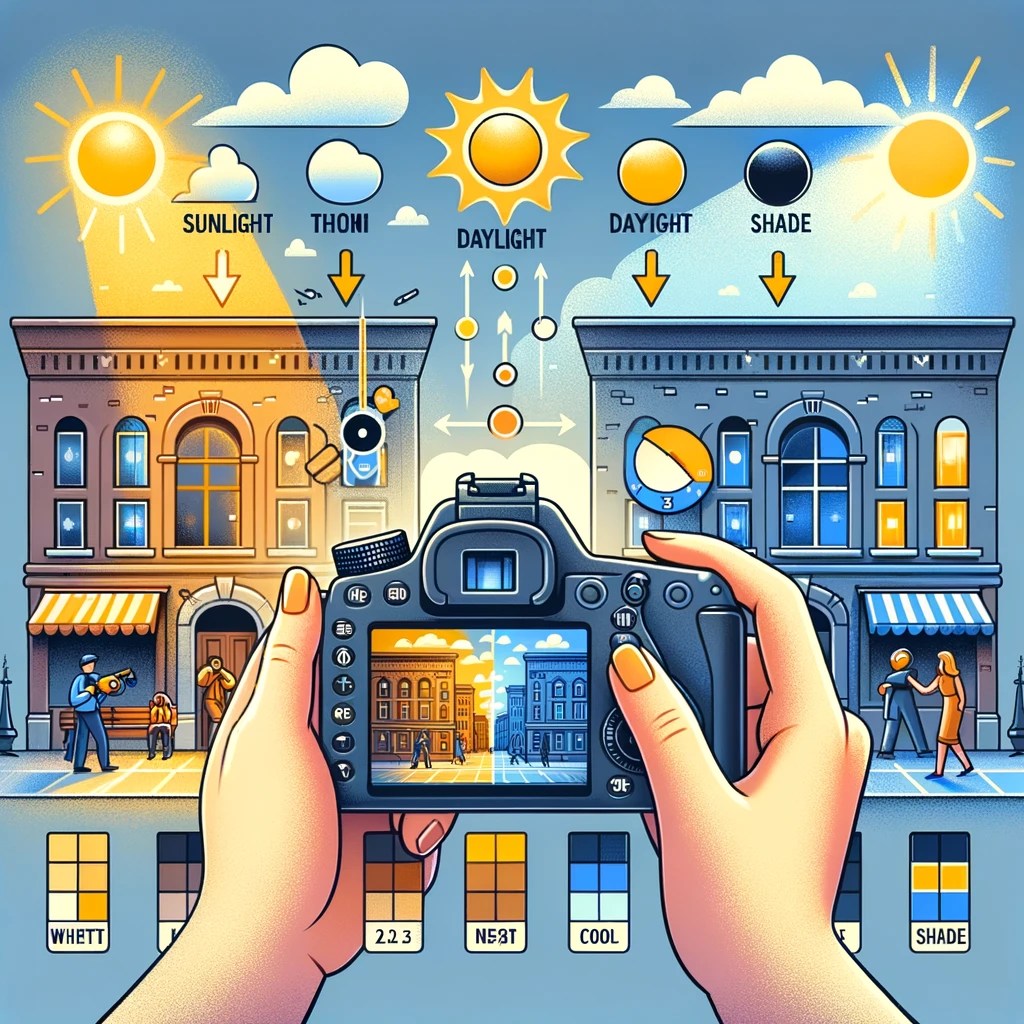
| Aspect | Detail |
|---|---|
| Definition | Balancing colors in images, removing color casts |
| Importance | Ensures accurate color reproduction |
| Color Temperature | Varies light color; measured in Kelvin |
| Camera Settings | Various presets like Daylight, Tungsten, Auto, etc. |
| Impact on Images | Affects image mood and realism |
| RAW vs JPEG | RAW allows post-processing flexibility |
| Manual Adjustments | Crucial for specific lighting situations |
Photography is an art and a science, requiring a deep understanding of various elements to capture stunning images. One such crucial element is white balance, often overlooked by beginners but essential in producing pictures that accurately represent the scene observed by the human eye.
What is White Balance?
White balance in photography refers to changing colours to make them appear more natural. Essentially, it’s about ensuring that what appears white in real life is depicted as white in your photographs. This adjustment is vital because different light sources can cast different colours on the subject, affecting how the camera captures and represents these colours.
Why is White Balance Important?
The significance of white balance lies in its impact on colour accuracy and image aesthetics. Incorrect white balance can result in images with colour casts, which may give your photographs an unnatural or unintended mood. Understanding and adjusting white balance is crucial in replicating true-to-life colours in your images, especially in diverse lighting conditions.
Understanding Color Temperature
Colour temperature plays a pivotal role in white balance. It refers to the hue of the light source, measured in Kelvin (K). For instance, daylight exhibits a blueish tint (higher Kelvin value), while tungsten lighting (like household bulbs) has a warm, orange tint (lower Kelvin value). Adjusting the white balance in your camera involves compensating for these colour temperature variances to achieve neutral, realistic colours in your photographs.
Camera White Balance Settings
Modern digital cameras offer a variety of white balance settings to tackle different lighting situations:
- Auto White Balance (AWB): The camera automatically adjusts the white balance based on the scene. However, it’s not always accurate, especially under mixed lighting conditions.
- Tungsten/Incandescent: Ideal for shooting indoors with warm lighting. This setting adds a cool tone to neutralize the orange tint.
- Fluorescent: Compensates for the cool, blue tint of fluorescent lights by warming up the colors.
- Daylight/Sunlight: Neutral balance suitable for outdoor shooting in sunlight.
- Cloudy: Slightly warmer than the daylight setting, used for overcast conditions.
- Flash: Adjusts for the cool tint of flash lighting by warming up the colors.
- Shade: Adds warmth to images shot in shaded areas, where the light is cooler.
- Custom and Manual Settings: For advanced users, these settings allow precise control over the white balance, tailored to the specific lighting conditions.
Impact on Different File Formats: RAW vs JPEG
Whether shooting in RAW or JPEG format can significantly influence your white balance control. RAW files retain extensive colour information, allowing greater flexibility in adjusting white balance during post-processing. In contrast, JPEG files fix the white balance at the time of shooting, limiting post-processing adjustments.

Practical Tips for White Balance Adjustments
- Use Presets for Common Situations: Familiarize yourself with your camera’s white balance presets for quick adjustments in typical lighting conditions.
- Manual Adjustments for Unique Lighting: Consider manual white balance settings for more accurate results in complex or mixed lighting.
- Grey Card for Calibration: Use a grey card to set a reference point for the camera, ensuring consistent and accurate color balance across different shots.
- Consider the Mood: Beyond accuracy, white balance can be creatively adjusted to evoke certain moods or atmospheres in your images.
Mastering white balance is crucial for any photographer to produce aesthetically pleasing and colour-accurate images. By understanding and effectively utilising white balance settings, photographers can significantly enhance the quality and realism of their photographs.
Navigating Common Challenges with White Balance
Challenges and Solutions in White Balance
1. Mixed Lighting
One of the most challenging situations for photographers is dealing with mixed lighting sources, each casting different colour temperatures. The solution is understanding the dominant light source and adjusting the white balance accordingly. Alternatively, manual white balance settings or post-processing can be used to correct the colour balance.
2. Auto White Balance Limitations
Auto white balance often struggles in environments lacking neutral tones or under complex lighting conditions. To circumvent this, photographers can switch to manual or preset white balance settings that suit the lighting situationbetter.
Advanced White Balance Techniques
1. Custom White Balance
Setting a custom white balance using a grey card or white paper provides the most accurate colour rendition for ultimate control. This method requires a photograph of the reference card under the current lighting conditions, which the camera then uses to calibrate the colour temperature.
2. Post-Processing Adjustments
Especially when shooting in RAW format, photographers can fine-tune the white balance during post-processing. This allows for precise adjustments and corrections, making it a favoured approach for professionals and enthusiasts.
Creative Use of White Balance
Beyond accuracy, white balance can be creatively manipulated to produce specific effects. For instance, a cooler white balance can evoke a calm, serene atmosphere, while a warmer setting can create a cozy, intimate feel. This creative flexibility opens up a world of artistic possibilities in photography.
Final Thoughts on White Balance
Understanding and mastering white balance is vital for photographers of all levels. It ensures colour accuracy and offers creative control over the final image whether adjusting settings on the camera or tweaking them in post-processing, a good grasp of white balance can significantly elevate the quality of your photography.
Want to Learn More?
Explore our Introduction to Photography for beginners or our advanced tutorials on Creative Photography Techniques. Our Photography Equipment Guide can also help you select the best gear.






